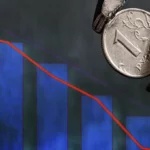
Now in its fifth month, the Ukraine War has impacted Latin American businesses across industries, in all aspects of operations. Multinationals in the IT sector scrambled to transfer their staff and operations out of the region, which has been a rich source of tech talent. Other companies watched fuel prices sharply rise due to sanctions on

From Virtual Work to Virtual Reality: Leveraging Innovation in Your Global Business
March 2022As new technologies continually emerge to help businesses navigate life in the pandemic, others are shaping a “metaverse” of the future. Solutions in both areas present potentially transformative opportunities for improving operations, growing market share, and adapting one’s business offerings. Read on for some of the many innovations shaping the global business landscape. Technologies that

Why Uruguay Should Be on Your Latin America Radar in 2022 and Beyond
February 2022When investigating Latin America markets for business today, it may pay to think small—specifically at a nation of only 3.5 million people and 68,000 square miles that offers big business potential: Uruguay. “Uruguay stands out in Latin America for being an egalitarian society and for its high per capita income, low level of inequality and

Trends, Market Spotlights, and Red Flags: Leveraging Fintech in 2022
January 2022As innovations from digital wallets to Bitcoin gain popularity worldwide, fintech has moved from a buzzword to a ubiquitous presence in everyday life. Companies across industries and geographies are using fintech to offer customers payment options outside the traditional banking system as well as more convenient ecommerce. Solutions range from platforms like Venmo, whose name

Latin America: Resilience and Opportunity in the Year Ahead
December 2021The last time we spotlighted Latin America, in January 2021, a global pandemic was hitting the region particularly hard due to structural challenges, entrenched inequities and a large portion of the economy engaged in contact-intensive and informal work. “We’ve been locked up for more than a year, and we can’t bear this any longer,” Colombian
